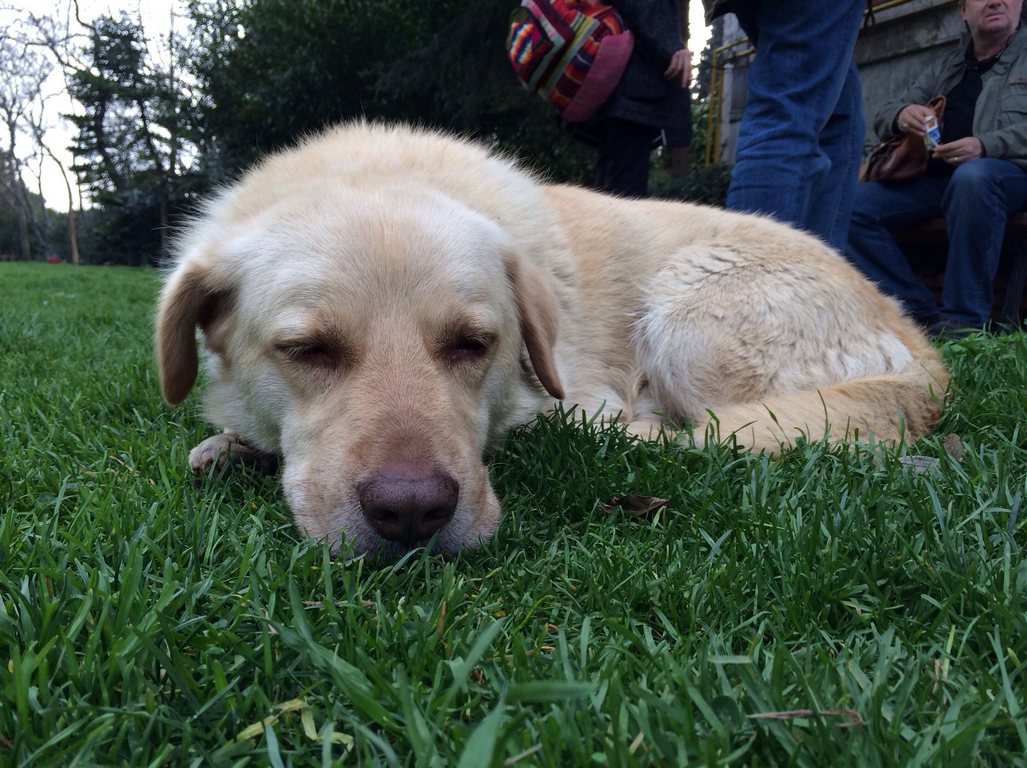Table of Contents Show
As a dog guardian you are aware of the common ‘problem’ that results when your dog’s urine burns the lawn.
It’s frustrating to deal with and difficult to prevent, but it’s not the end of the world – and there are sensible things you can do without causing harm to your dog.
What Causes The Burn?
Urine removes excess nitrogen from the body via the kidneys.
Dog urine is high in nitrogen, so when your dog urinates, it’s comparable to pouring liquid fertilizer on the lawn. Small amounts of fertilizer are good for the grass, but the excess from the concentrations of urine causes nitrogen burn.
Dispelling The Myths
Adding tomato juice or MSG to a dog’s diet or baking soda to drinking water does absolutely no good in remedying the grass burns, and isn’t in your dog’s best interest either.
The various commercial additives intended for your dog to ingest that are designed to alter the urine pH also are ineffective in saving your lawn and can be very harmful to your dog.
Don’t be fooled by those slick marketing ploys that sell their chemistry-altering products as ‘natural’ – there is nothing natural about altering a dog’s body chemistry.
It’s not the acidity of the urine but the nitrogen in the urine that causes the burns.
Another fallacy is that a female dog’s urine is more acidic than a male dog.
Read Also :
Female dogs simply urinate in concentrated pools whereas males ‘spread it around’.
Even male dogs cause shrubs, vines, and grass around their frequent relief spots to burn.
Large dogs create more burn than small dogs simply due to the volume of concentrated urine.
More On What NOT To Do
As quoted by Dr. Steve Thompson, DVM (Director, Purdue University Veterinary Teaching Hospital Wellness Clinic),
“The addition of acidifying agents, including nutritional supplements like D-I, Methionine (Methioform), Ascorbic Acid (Vitamin C), or fruit juices will have no benefit for this problem and may
predispose the dog to an increased incidence of certain bladder stones.
Likewise, alkalinizing agents, including baking soda and potassium citrate can predispose to other types of bladder stones or infections.
The addition of any of these supplements has enough potential to cause harm, with no known benefit for the lawn, and is not recommended.
Don’t give your dog additives to ingest that will alter his chemistry.
Here’s What You CAN Do
Here are a few simple options if you’re determined to have a green lawn.
After your dog urinates
pour a jug or two of water on or hose down the spot – the more water the better; the sooner the area is flushed with water after urinating, the better.
This dilutes and moves the nitrogen salts away from the root zone.
Note: this simply helps lessen the lawn burn; it does not eliminate the burns.
Ensure your dog has free access to fresh water
Drinking water will help dilute the dog’s urine and lessen the severity of lawn burn.
Do NOT add salt to his food or water to induce drinking!
Re-seed each burn
or your entire yard, with grasses that are more urine-resistant.
This will include clover, fescue, and perennial ryegrass.
A study revealed that Bermuda grass and Kentucky bluegrass were the most susceptible to damage from dog urine.
To re-seed the spots, simply rake vigorously to scrape the soil, sprinkle with seed, and keep well watered until it germinates.
I use clover and it’s lovely: deep green, blooms with lovely scented white flowers, and is shorter and thicker than other grasses. (Source: Turfgrass Producers International)
Rent a lawn aerator or have a service do this for you
Keep the lawn well watered and consider using less nitrogen-based fertilizer on the lawn.
Train your dog to urinate in a specific location in the yard
Try a surface such as pea gravel (not coarse gravel) or mulch that will be acceptable for the dog and conducive to doing a normal potty.
Be sure it’s not near their sleeping area, in a high-traffic area, or in an area that the dog views as ‘uncomfortable’.
If you have a male, try adding a large boulder, lawn ornament, or pseudo fire hydrant for his marking convenience.
During the training time, your dog will not be able to be out in the yard unsupervised.
This will be much like puppy potty training.
I have friends who have trained both males and females to successfully use their designated potty places.
In Summary
Don’t give your dog any additives, chemicals, ‘neutralizers’, pharmaceuticals, or foods not intended for a carnivore.
Dilute well with water where your dog urinates on a daily basis.
Re-seed with clover, fescue, or perennial ryegrass.
Train your dog to relieve itself in a designated area of the yard.
Don’t sweat the small stuff – it’s just grass and, like hair, it grows back.

